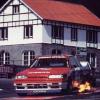Rb26 And Higher Compression
Announcements
-
Similar Content
-
Latest Posts
-
Throwing my spoon to the soup here a bit. When I installed a 044 back in 2012, along with the direct power mod, the car became very difficult to start. To a point I burned one starter motor as I was late for work and tried to get the thing going. With some tuning and careful use of gas pedal when cranking it became bearable. Trying to make this short as possible, but the 044 died after 2-3 years, after which I went with an AEM 320lph pump, which also died after about 4 years to my dismay. After that I went with a Nismo pump, and while trying diagnose an emissions problem, I noticed for the first time that my fuel pressure was 5bar/72psi on idle, and that removing the vacuum line did nothing. After monitoring the situation, and removing the direct power feed and going back to FPCM in attempts to remedy it, I noticed there was fuel in the pressure regulator vac line. Kept the FPCM, installed AEM external regu and the car became sooo much better in every way, including starting. And I had driven it like it was for 11 years.. Anyway, I agree these are likely two different problems, and the FP problem you just haven't noticed before. I do not know much about haltecs, but what first came to mind was the CAS, which probably is not there any more. So how is the wiring from haltec to gauge cluster? How is the battery voltage and alternator?
-
Your car was auto before? You have different diff ratio (auto vs manual i think? or n/a and turbo?)
-
+1 for getting a screen off alibaba, CarPlay/Android Auto is vastly better than whatever navigation cars had 10 years ago. I got an Android screen for my 2015 BMW, huge difference. Fully compatible with factory stuff including iDrive controls.
-
Yeah, my offer was more to show exactly how rough and ready the rig can be and still be useful. Youtube vids will definitely show cleaner setups. Same concept though.
-
I would guess the seal has gone down at the speedo drive and gearbox oil has crept up the drive cable sheath and fouled the speedo head.
-


Recommended Posts
Create an account or sign in to comment
You need to be a member in order to leave a comment
Create an account
Sign up for a new account in our community. It's easy!
Register a new accountSign in
Already have an account? Sign in here.
Sign In Now